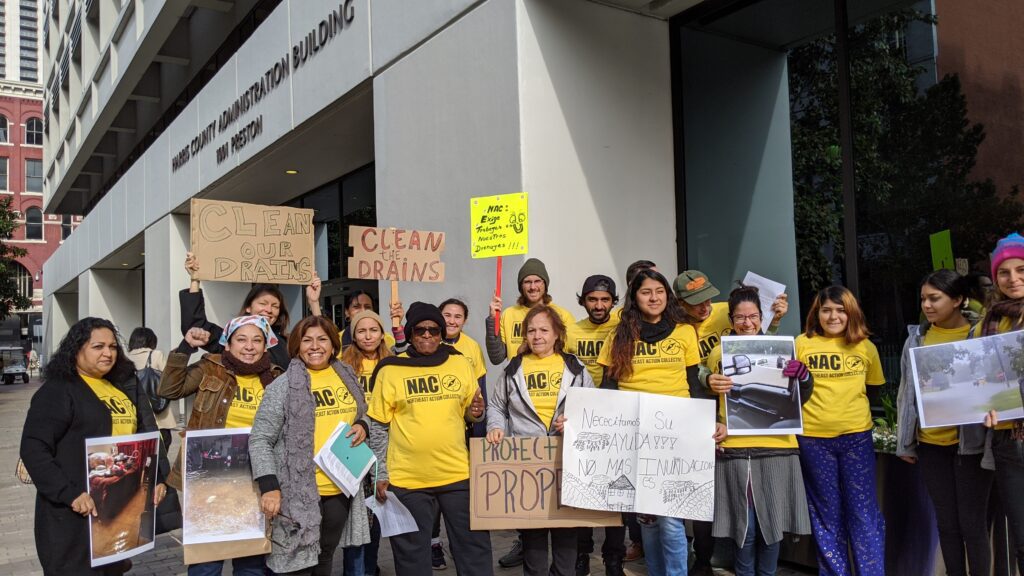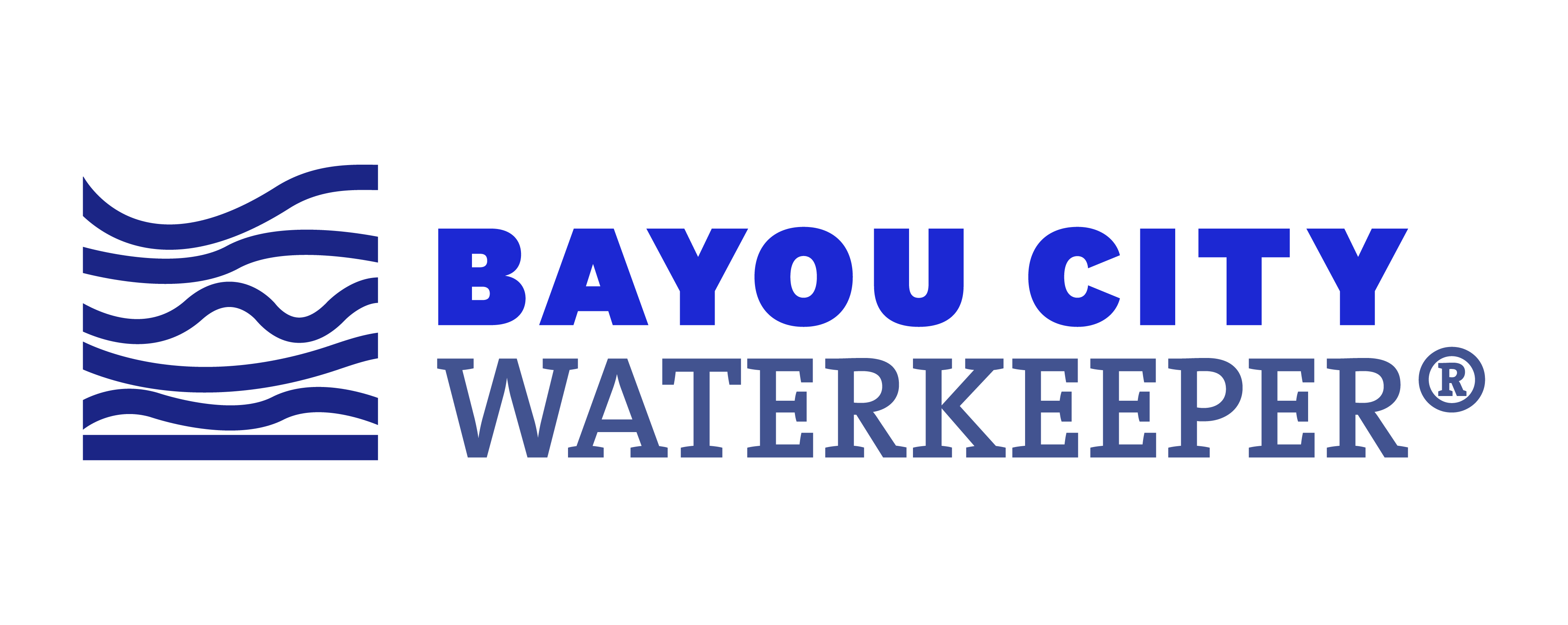This is a guest post by Jessica Villalón, a summer 2020 legal intern.
When Hurricane Harvey made landfall along the Texas Coast two years ago, no one could have predicted the magnitude of devastation that would follow. Although many Houston residents were able to evacuate and escape the storm’s wrath, thousands of Houston’s poorest residents were forced to weather the storm, finding shelter in overcrowded public buildings or watching their homes get swept away by the waters’ violent current.
The Fifth Ward, a historically black and impoverished neighborhood, was among the communities in Houston met with the greatest devastation. Many families in the area and other poor, black neighborhoods in Houston were displaced and three years later, have continued to struggle to recover from the storm’s impact. Harvey’s destructive impact on Houston’s black and low-income residents was not the product of mere misfortune; in fact, it represents the reality of natural disaster for many poor people and racial minorities in the United States. Why is this the case?
Low-income communities of color like the Fifth Ward are typically hit hardest by flooding
Research has shown that the populations most vulnerable to flooding are disproportionately poor and ethnic or racial minorities. In urban areas, communities of color are often segregated and confined to areas within floodplains or poor infrastructure ill-designed to withstand the effects of severe flooding.
In South Texas, where I am from, many people of color are sequestered in “colonias,” small impoverished neighborhoods sited along the U.S.-Mexico border. These communities are similarly located in areas prone to flooding and lack sufficient wastewater infrastructure. In addition to being particularly vulnerable to flooding, these populations are most likely to lack the resources and capacity to respond and recover in the event of a flood.
When Hurricane Katrina struck Louisiana in 2005, the brunt of the damage was borne by Louisiana’s black neighborhoods; of the seven zip codes that suffered the costliest flood damage, four neighborhoods were at least 75 percent black. More recently, when Hurricane Harvey hit the Texas coast in 2017, the worst flood damage was concentrated in southwest Houston, where 49 percent of residents are nonwhite. While many wealthier Texans had the means to evacuate their homes, many poor and disabled residents were forced to brave the storm for lack of available funds and resources. Undocumented immigrants were similarly pressured to stay put for fear of being brought under the custody of Border Patrol, who declined to suspend its checkpoints during Harvey.

Low-income communities of color face more obstacles to recovery
Harvey’s impact on Houston’s Fifth Ward and other predominantly low-income, nonwhite neighborhoods typifies the long-term impacts of flooding on the recovery process. Unlike homeowners in wealthier neighborhoods, homeowners in lower-income neighborhoods often lack the resources to repair flood damage in their homes. This is due in part to the fact that most low-income households lack flood insurance. Nationally, only 25 percent of low-income households are covered by federal flood insurance, and the ones fortunate enough to have secured coverage fall victim to the government’s sluggish response.
By April this year, Harris County had only disbursed 50 checks to homeowners applying for aid after Harvey. Low-income communities and communities of color are also often subjected to disproportionately high denial rates for relief and recovery programs. One year after Harvey, more black and Hispanic Houstonians remained displaced or forced to dwell in unrepaired, flood-damaged homes. Moreover, as of 2018, 27 percent of Hispanic Texans and 20 percent of black Texans whose homes were affected by severe flood damage had been unable to reinhabit their homes. This was in stark contrast to the 11 percent of white residents that were unable to reinhabit their homes.
In addition to being particularly susceptible to respiratory illnesses due to settling in unrepaired, mold-infested homes, these communities are also vulnerable to runoff migrating from nearby toxic waste facilities and abandoned Superfund sites, 73 percent of which are located in communities of color. According to the EPA, of the 16 Superfund sites that were reported to be flooded by Harvey, 9 were located in predominantly nonwhite, low-income neighborhoods. This raises the risk of toxic pollutants seeping into the groundwater below their homes and exposing such communities to polluted water supply, air quality, and potential health consequences as a result. With growing anxiety over climate change and the emergence of the COVID-19 pandemic, the effect of floods on vulnerable communities has become of increasing concern. The disproportionate impact of flooding and other environmental hazards on minority communities has similarly highlighted the broad reach of institutional racism.
Disproportionate impacts of flooding rooted in institutional racism
Also widely known as systemic racism, institutional racism subtly and systemically denies people of color resources and privileges in education, healthcare, housing, criminal justice, and employment. The enduring impacts of systemic racism have been emphasized by the reinvigorated Black Lives Matter movement, which seeks the fair treatment of people of color in policing and the greater criminal justice system. This reality is rooted in centuries of racist law and policy resulting in the disempowerment and disenfranchisement of black people and people of color in the United States.
As a result of systemic racism, black Americans are also disproportionately susceptible to and impacted by environmental hazards such as flooding and climate change. This is called environmental racism.
In the 1970s, Dr. Robert Bullard, widely recognized as the “father of environmental justice,” was among the first to uncover that toxic facilities and sewage plants in Houston were disproportionately located in black neighborhoods. Bullard’s research catalyzed the environmental justice movement, which aims to address the disproportionate impact of environmental hazards on low-income and people of color and advocates for the inclusion of vulnerable populations in decision-making processes.
The disproportionate impact of environmental hazards on the poor and racial minorities relates in large part to redlining, or discriminatory housing policy, that confined racial minorities to “sacrifice zones,” or undesirable neighborhoods with lower property values and increased exposure to sewage and waste facilities. In a recent interview, Dr. Bullard stated that discriminatory placement of sewage and waste facilities has led to worse health outcomes for racial minorities: “You tell me your zip code, and I can tell you how healthy you are […] You can go from one census trace or one zip code to another, and life expectancy changes by more than fifteen or twenty years by just crossing that line.”
The trend identified by Dr. Bullard rings true today. In February 2018, the EPA’s National Center for Environmental Assessment published a study finding that racial minorities and low-income populations are disproportionately subjected to poorer air quality than wealthier and non-minority populations. Increased awareness of racial disparities in pollution exposure and flooding has compelled activists, lawmakers, and environmentalist organizations in Houston and across the nation to adopt an environmental justice approach to environmental issues.

Partnership among Houston’s communities and social justice and environmental organizations targets flooding inequities
In the wake of Harvey, Bayou City Waterkeeper came together with a broad coalition of organizations to found the Coalition for Environment, Equity, and Resilience. Today, the coalition includes 26 organizations and works actively with community members in the Fifth Ward. CEER has demonstrated their commitment to flooding equity by working with the Harris County Commissioners Court to pass the Harris Thrives Resolution, which calls for prioritizing the needs of vulnerable communities through the equitable distribution of funds for flood bond projects.
Harvey’s impact has also led affected residents of the Houston community to mobilize against flooding inequity. Local grassroots organizations, such as the Northeast Action Collective founded by Fifth Ward residents, have organized to advocate for improved drainage for their neighborhood and increased community engagement in the flood bond process.
Houston’s progress toward equity in flood reduction reflects the trajectory of environmental justice and climate action across the United States. Since the publication of Dr. Bullard’s work decades ago, the environmental justice movement has demonstrated its vital role in protecting disempowered communities and equipping them with the knowledge, skills, and initiative to organize against environmental injustice. In our quest toward disaster preparedness, conservation, and clean energy, ensuring that minority and low-income populations are not left behind is crucial to progressing toward a more sustainable and more equitable future.
 Jessica Villalón is a third-year law student at the University of Texas School of Law. She was born and raised in the bordertown Laredo, Texas where she also attended university. Jessica obtained her Bachelor’s degree from Texas A&M International University in 2017, graduating summa cum laude with a major in Multidisciplinary Studies. Jessica spent her time before law school working as a literacy tutor for elementary school ESL students in Laredo. After law school, she hopes to practice in Texas and do environmental justice work.
Jessica Villalón is a third-year law student at the University of Texas School of Law. She was born and raised in the bordertown Laredo, Texas where she also attended university. Jessica obtained her Bachelor’s degree from Texas A&M International University in 2017, graduating summa cum laude with a major in Multidisciplinary Studies. Jessica spent her time before law school working as a literacy tutor for elementary school ESL students in Laredo. After law school, she hopes to practice in Texas and do environmental justice work.
